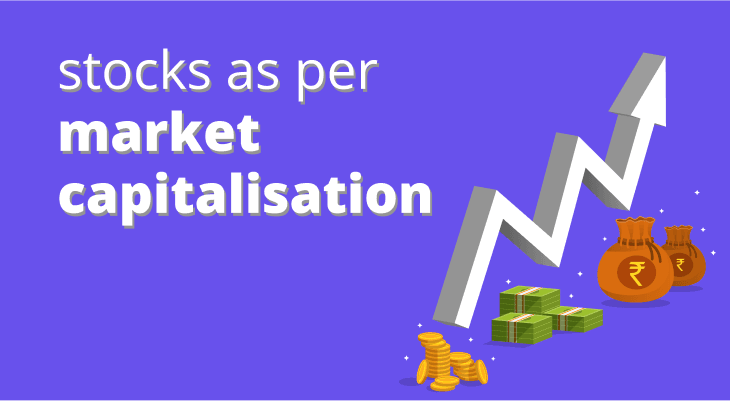
What is a Bull Market? How to Benefit from a Bull Market
Rather than a physical concept, a bull market is a period that a financial market may experience when prices of securities and assets are on the rise or are estimated to rise. Commonly, in bull markets, prices of assets are predicted to increase by approximately 20%. Investors refer to this surge as a “bullish market trend”. As you may have gauged, a bull market presents opportunities for investment because the market sentiment is optimistic. Consequently, a bull market results in dynamic trading activity over various stock exchanges.
To leverage the opportunities that a bull market presents, investors employ many strategies like retracement and increased purchase and hold. For any investor venturing into the world of trading securities, especially stock trading, knowing about bull markets and related aspects is crucial.
What is a bull market?
A bull market represents a certain period in the financial markets when the prices of assets are predicted to increase or show a rising trend. This upward movement of prices is consistent and steady, signifying relatively less volatility than in normal times. In this upward-trending phase, the following can be seen:
The confidence of investors is high, and the overall outlook is optimistic.
As consumers’ confidence increases and cash flows surge, companies are permitted to boost their turnover, resulting in higher profits that may be dispersed among company shareholders.
During a bull market, there is a growth in investment from investors, institutional and individual. This, in turn, enhances liquidity and this aids more gains in price.
How to Recognise a Bullish Market
Once you know what defines a bull market, you should grasp how to recognise a bullish trend. There are key signals that tell you about an impending bull market. These are explained below:
Significant Market Rally
A steady stock market upward trend with stock prices rising in a stable manner signifies a bull market on its way. This may be due to positive economic policies such as a reduction in interest rates or relevant tax cuts. Spending by the government on major development projects like healthcare and infrastructure also bolsters the growth of the market by rising investment levels and disposable income.
Index of Volatility
An increased volatility index may indicate a bullish market trend. Here, an increase in price movements sends signals of an optimistic investor sentiment. In the Indian context, the NIFTY, a key index, represents the volatility of Indian markets, attempting to gauge stock sensitivity on the National Stock Exchange (NSE).
Decreased Bond Yield
In the course of a bull market, typically, you will discover that bond yields drop. This makes low-risk securities and financial instruments less appealing, making investors search for better gains in the equity market. Such a situation heightens the demand for stocks and boosts market growth.
The Impact of a Bull Market on a Country’s Economy
A bull market has vital implications that tell you about a country’s economy. Typically, bullish trends in financial markets are linked with positive investor sentiment and economic and financial prosperity. As the prices of stocks move upward, there is the prospect of higher capital for investors. With a domino effect in place, this circumstance results in enhanced consumer spending and general confidence.
Furthermore, a bull market nudges businesses to expand their operations by investing more, resulting in the creation of employment opportunities. So, when you ask the question, “What is a bull market?”, you may get a simple answer that has implications for many aspects of the economy to be considered. It is important to note, after going through several positive conditions that a bull market may lead to, that the impact of bullish trends may vary and not every section of a country’s population or sectors/industries may reap equal benefits.
Key Characteristics of a Bullish Market
Bull markets have unique characteristics and these comprise:
Increasing Prices of Securities/Assets
A bull market is marked by gradually rising prices of assets and securities, propelled by strong demand and the growing enthusiasm of traders and investors.
Optimistic Sentiment
Bullish market conditions lead to general positivity in investors and the trading fraternity overall. Investors are typically optimistic about the state of the economy and the prospects of the financial markets. This leads to a surge in buying securities. The mood of optimism may be seen on the consumer side with more spending sparking market growth and bullish market trends.
Developing Confidence in Investors
When a bull market presents itself, the confidence of investors is heightened. Among the investor community, there is a strong belief that downturns, if any, will be temporary and there is no cause for worry as the broader market condition is bullish.
Decrease in Volatility
During bull market phases, volatility is prone to reduce as prices feature an upward trend with less relevant shifts.
Increase in Trading Volume
Bullish markets are accompanied by high volumes in trading with many investors jumping on the optimism bandwagon to invest in securities. Apart from dynamic purchasing activity in a bull market, selling activity also occurs with equal strength.
What causes a bull market?
Various factors can lead to the evolution of a bull market, contributing to its sustainability. These are highlighted below:
Recovery of the Economy
After an economic recession, bull markets tend to develop and thrive, as the economy faces a rebound effect. This lights the flame of growth and confidence in investors.
Advancements in Technology
Markets are often sparked in a forward direction due to innovations and inventions in the sector of technology. For instance, the Internet boosted stock returns in the dot-com revolution.
Positive Reports of Company Earnings
A bull stock market, or a bullish sentiment in any securities market, may be set off by robust earnings reports released by listed companies. This is an indication of a sound economy and leads to confidence in traders and investors.
International Elements
Positive events and happenings in the largest economies of the world, like those of the USA, can influence bullish economic trends and markets in other countries.
Policies of the Government
Specific government regulations and policies such as stimulus packages and tax cuts can trigger investments in industry and business, not to mention spending by consumers. This may boost the beginning of a bull market.
Factors of Demand and Supply
As with all valuable investments, a limited supply of equity and a greater demand for it result in the increase of prices of shares. This propels market bullishness as more and more investors show an inclination to invest.
How to Benefit from a Bull Market
As an investor, you can potentially benefit from a bull market if you follow these tips:
Consider an investment strategy for the long term, and stick to your plan.
Make regular investments so you can balance your portfolio in case the market expresses unexpected price volatility.
Make investments in cost-effective index funds with low fees as these potentially deliver positive returns in the long run.
Make adjustments to your plan as you approach retirement. At this life stage, you may wish to consider hedging your risk and mitigating the effects of price volatility.
Keep your emotions in check as these may hamper your decisions. Excitement or stress may come in the way of your investment decision-making and lead to hasty and regrettable consequences.
The Benefits of a Bull Market
Some of the features discussed earlier translate into the benefits/advantages of a bull market. Anyway, the benefits of a bull market are described briefly below:
Positive Returns: Investors can potentially yield high gains from a bull market as prices are on an upward trend.
Creation of Wealth: A bull market gives investors the chance to create wealth over a longer term.
Rise in Confidence: Bullish market trends signal positivity in the market and investors’ moods see a lift where investing is concerned.
Portfolio Diversification: Since bullish trends signify prosperity and overall market positivity, they may be a sign for investing in stocks and diversifying financial portfolios.
Conclusion
A bull market, as it relates to financial markets, typically stock markets, indicates an overall market sentiment that is generally optimistic, delivering confidence in investors. A bull market occurs when the prices of any assets or securities, commonly stocks, are on the upward trend, or are estimated to rise continuously. Investors discover that bullish markets are dynamic places to be as the markets are rife with opportunities for profit-making and possible growth.
Nonetheless, as appealing as this prospect may seem, it is always necessary to tread with caution on the investor’s part. If you are an investor prepared to go into a bull market for investing, your strategies and plans should be made in advance. Consider aspects like diversification and your distinctive financial objectives, risk profile, and long-term view.
FAQ
What is a bullish trend in the financial markets?
In the financial markets, a bullish trend reflects a market trend in which stock prices are on the rise, that is, experiencing an upward movement. Stock prices may either increase within a certain sector or industry or in the general market overall. A bullish trend in the financial markets may also indicate an expectation that stock prices will increase soon.
Is a bull market good or bad?
Bull markets may be considered better times to sell your stock for a profit, as prices may have increased. In case you wish to invest, a bull market may be considered a time to purchase stock, even though prices may be higher, it's a period of less risk. In a bull market, as the market trend shows an upward movement, volatility may be reduced.
How does a bull market compare with a bear market?
A bull market is witnessed when stock prices are on the upward trend, that is, they are rising. In contrast, a bear market is seen when the prices of stocks fall and the market is on an overall decline. Bull markets experience a sustained increase in the prices of stocks, while bearish periods imply a prolonged decrease. Consequently, bull markets signal confident investor sentiment and bear markets result in investor pessimism.


